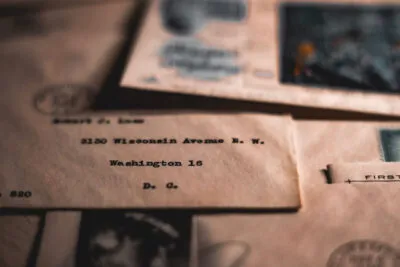How to Avoid the Streisand Effect

Get Help Right Away.
TRANSCRIPT
Introduction
Are you the target of Internet defamation and want to avoid going viral? Drawing unwanted attention to a private matter is referred to as the Streisand effect. By the end of this video, you will learn what the Streisand effect is and how you can avoid triggering it.
Hi, I’m Dayra Schmidt, a paralegal at Minc Law, the nation’s leading law firm when it comes to dealing with online defamation and content removal.
Understanding the Streisand Effect
If you or your business is dealing with unfavorable online content or Internet defamation, such as a YouTube video with almost zero views or a Facebook post about you with a handful of likes. Most people’s first instinct is to often send a cease and desist letter or go straight to the courts and file a defamation lawsuit against who you feel has wronged you. And that may be the best option for some situations, but not all. Sometimes taking action like this can do more harm than good. It’s called the Streisand effect, and it is definitely something that you want to avoid at all costs.
In this video, I will go over what the Streisand effect is, how it can negatively impact you or your business, notable examples of the Streisand effect, a common thread between those examples, and how you can avoid triggering it.
Examples of the Streisand Effect
The Streisand effect occurs when someone attempts to censor someone or something and ultimately draws more attention to the matter than it would have otherwise gained if it was left alone. This may sound familiar to you due to sharing the same name as world famous American entertainer Barbara Streisand. In 2003, Barbara Streisand filed a $50 million lawsuit against a photographer in the California Coastal Records Project for invasion of Privacy when an aerial image of her California mansion was published on the Internet.
A key detail here was that defendants were not the paparazzi trying to make money. The photographer was documenting California coastlines and the effects of coastal erosion. In fact, Streisand’s home was one of 12,000 coastline photographs made available in the collection. Talk about a needle in a haystack. Before Streisand’s lawsuit, the image containing the rear view of her mansion had been downloaded a whopping six times, with two of those downloads being Streisand’s own attorneys. Barbara’s plan to suppress the image in question imploded on her, leading to the same image being viewed nearly half a million times within the first month of filing the lawsuit as it became public knowledge. Not only did Streisand lose her case, but now the image of her home lives on in infamy.
Although this incident took place nearly two decades ago, it has stuck as a namesake in pop culture ever since and has now used broadly to describe any event where this kind of thing occurs.
Creating unwanted attention for something that is negative is just the beginning. Increased scrutiny to defamatory content can cause the content to go viral. Once content goes viral, it can be very difficult, if not impossible to undo the damage. The scope of work significantly increases to remove content from each website, thus considerably increasing the cost and time involved.
Avoiding the Streisand Effect
If you are dealing with a situation and are trying to avoid triggering the Streisand effect or are worried it could happen, the single most important piece of advice we can offer is to stop and think before responding to negative and defamatory online content. Impulsive attempts to censor someone else have a tendency to backfire, so don’t act on impulse.
Here are a few other important tips to protect yourself from the consequences outlined in our examples. If you’re a politician, negative online content comes with the territory of being a public figure. Furthermore, most statements made about you will be protected by the First Amendment. Popular websites and forums like Twitter and Reddit have a very loyal and dedicated user database, so be careful what you say online, so you don’t get attacked by a social media mob.
Consider the impact of the content and think about whether the issue or threat is really worth your time, energy, and money. If it’s something inconsequential that isn’t actually harming you or so trivial that addressing it would be petty, just let it go. However, if it’s something serious and can come back and haunt you in the future, if not addressed, handle it now before it causes more harm later because you try to sweep it under the rug and it didn’t go away.
Make sure whatever you say is something that you wouldn’t mind sharing or going public and makes your case look better while also being something the opposing party wouldn’t want to share because it will only make them look bad. Avoid asserting unsubstantiated claims and frivolous threats. The more valid and meritorious your arguments and legal claims are, the more unlikely it is that the person will want to bring attention to them. On the other hand, the weaker and more groundless and bullyish your threats are, the more likely it will garner public attention.
Conclusion
But that’s all the time I have for today. I hope this video was helpful in explaining what the Streisand effect is and how you can avoid becoming a casualty of it. At Minc Law, we help our clients assess and deal with risky situations every day. So if you’re considering filing a defamation lawsuit and want to discuss your options before you take that leap, call us for a free consultation at 216-373-7706 or head over to minclaw.com and submit a contact form. This is Dayra Schmidt from Minc Law. Thanks for watching and I’ll see you in the next video. Bye.
END OF TRANSCRIPT



